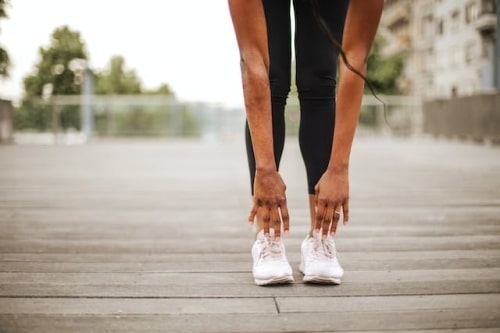Common Injuries in Volleyball

Volleyball, a sport loved for its dynamic and fast paced nature, has gained immense popularity worldwide. As athletes immerse themselves in the game, the risk of injuries becomes inevitable. Understanding common injuries in volleyball is crucial for players, coaches and enthusiasts alike.
Understanding the Physical Demands
Volleyball demands agility, strength and endurance. The abrupt starts, stops, jumps and dives place a significant strain on various parts of the body. Players need to be aware of the physical demands to comprehend the potential risks associated with the sport.
Sprains and Strains
In the realm of volleyball, sprains and strains are familiar adversaries. Distinguishing between the two is essential, as is recognizing the body parts susceptible to these issues. Ankles, knees and wrists are particularly prone, emphasizing the need for targeted prevention strategies.
Ankle Injuries
Ankles bear the brunt of sudden movements and quick directional changes on the volleyball court. Understanding common ankle injuries, such as sprains and fractures, is paramount. Additionally, players can benefit from practical tips for preventing injuries and effective rehabilitation methods.
Knee Injuries
The explosive jumps integral to volleyball increase the risk of knee injuries. Exploring the specific strains on the knees during play and identifying prevalent knee injuries in the sport allows players to adopt proactive measures to protect this vulnerable joint.
Shoulder Woes
The repetitive overhead motions involved in serving, spiking and blocking expose players to shoulder injuries. Delving into the types of shoulder injuries and incorporating targeted exercises into training can help minimize the risk and enhance overall shoulder health.
Lower Back Pain
While lower back pain might be underestimated, it is a common issue in volleyball. Understanding the causes and implementing strengthening exercises and proper form are crucial for preventing and managing lower back pain effectively.
Impact on Wrists and Hands
The nature of ball contact in volleyball puts wrists and hands at risk. Detailing the injuries associated with these body parts and suggesting strengthening exercises ensures that players can enjoy the game without compromising hand and wrist health.
Preventive Measures
To keep injuries at bay, players must prioritize warm up routines, focusing on dynamic stretches and exercises that mimic the movements in the game. Emphasizing the importance of flexibility and overall conditioning is instrumental in injury prevention.
The Role of Proper Technique
Correct form is a cornerstone in injury prevention. Players must be educated on the significance of proper technique in reducing the risk of injuries. Understanding the biomechanics of movements and ensuring adherence to correct form can make a substantial difference.
Rest and Recovery
In the pursuit of excellence, adequate rest often takes a back seat. However, it is a crucial element in injury prevention. Balancing intense training with sufficient recovery time and incorporating recovery strategies, such as ice baths and massages, is vital for sustained performance and health.

Injury Management
Despite precautions, injuries may occur. Immediate actions on the court and seeking professional medical advice are imperative. Players should be aware of basic first aid measures and understand when it is crucial to consult a healthcare professional for proper diagnosis and treatment.
Mental Resilience
Injuries not only affect the body but also take a toll on mental well being. Addressing the psychological impact and adopting strategies for maintaining a positive mindset during the recovery process are essential aspects of holistic injury management.
Common Myths and Misconceptions
Dispelling myths and misconceptions surrounding volleyball injuries is essential for informed decision making. By separating fact from fiction, players can better navigate their training routines and make choices that contribute to long term health and performance.
Conclusion
In conclusion, understanding common injuries in volleyball is pivotal for players looking to enjoy the sport while safeguarding their well being. By adopting preventive measures, focusing on proper technique and acknowledging the importance of rest and recovery, athletes can minimize the risk of injuries and prolong their involvement in the game.


